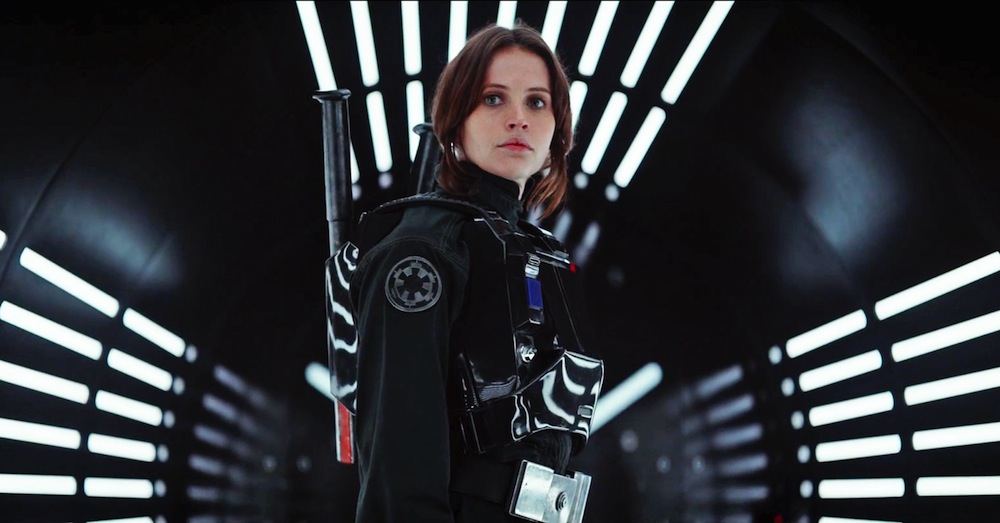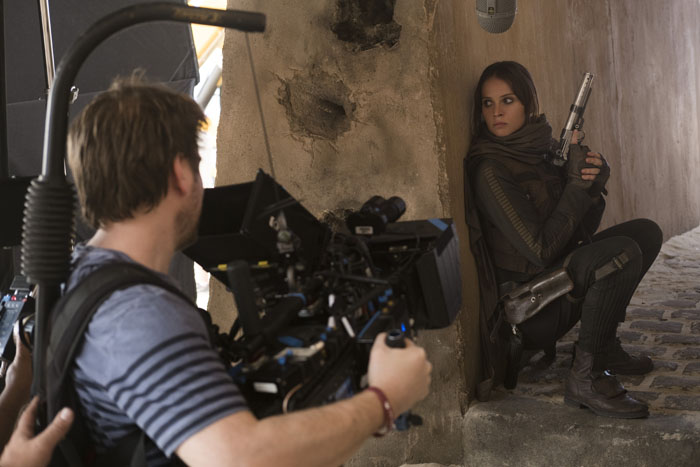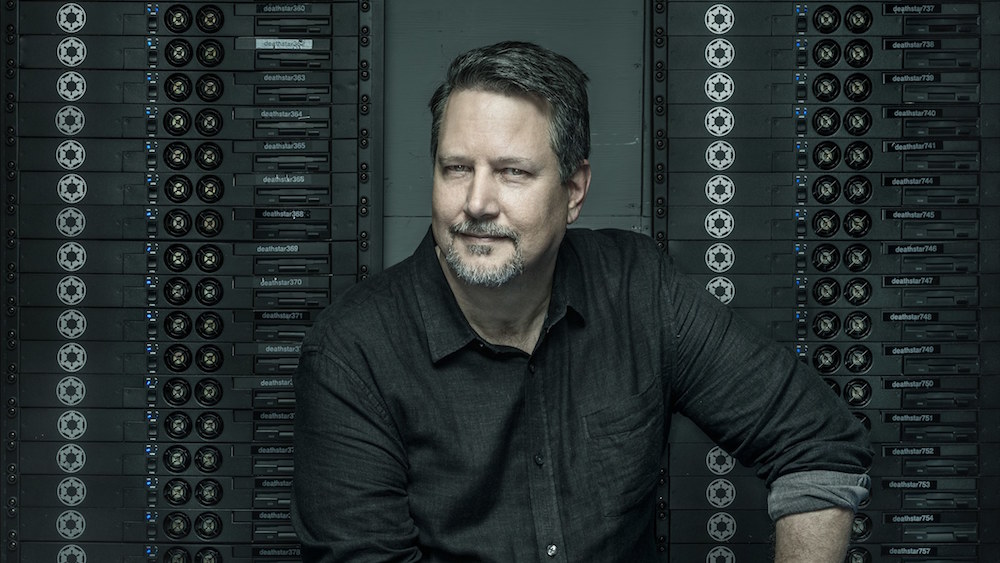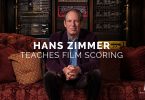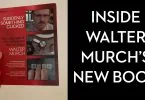The Making of Rogue One
The excitement around Rogue One is building and I thought it was a good opportunity to pull together some great resources on StarWars: The Force Awakens that I’ve been meaning to post for some time, as well as the good stuff that’s currently available on Rogue One itself, which (when I originally published this post) is mostly these two videos!
The Rogue One teaser trailer (which I’m sure you saw when it came out) manages to follow the current trailer trope of a really loud klaxon sound, first established by Christopher Nolan’s Inception and most recently seen in the Wonder Woman trailer.
Either way, as a big fan of Gareth Edwards’ work, I can’t wait to see it!
UPDATE – Gareth Edwards on Reshoots, Trailer footage and the original scripted ending (Spoilers!)
If you were troubled by internet scuttlebutt about re-shoots, footage included in the trailers but not the final film and that ending, then Gareth Edwards’ interview with Empire magazine (currently pulled after being published too early?) contains some interesting info direct from the horses mouth.
In the same interview, he also talked about the much-discussed Rogue One reshoots, along with footage present in some of the early trailers that was absent from the film itself – notably the shot of Jyn facing the camera with lights flickering on behind her, and her declaration of “I rebel”.
“There was a bit of a process to refining the third act in terms of specific shots and moments, and certain things just fell away,” Edwards said. “What happened was marketing loved those shots and said, ‘Oh, we’ve got to use that.’ And you say, ‘Well, it’s not in the movie,’ and they said ‘It’s okay. It’s what marketing does, we just use the best of whatever you’ve done.'”
Read all about it in this post from British newspaper The Telegraph. (Spoilers!)
Editing Rogue One
Steve Hullfish continues his always excellent series of interviews, with some of the film industry’s best editors, in this instalment of Art of The Cut with Rogue One editor Jabez Olssen.
Rogue One‘s credited editors are Jabez Olssen, John Gilroy and Colin Goudie (CG being Edward’s editor on Monsters).
The entire interview is absolutely worth a close read, but here are a few of my favourite quotes to whet your appetite.
Our director Gareth operated the camera for most of the shoot. And that gave him a lot of freedom to find the shots in the moment. So the footage was a lot more like a documentary shoot; in that Take 1 might be a wide shot looking in one direction and Take 2 could be a close up looking in the other direction, which gave the script continuity person a hell of a job, and was an interesting adventure for us in editorial too because the coverage was not the standard set-ups you normally get. We might find a beautiful little moment, towards the end of Take 8 which was not covered anywhere else. It was really exciting, but meant that the cutting was not quick. It was a lot of work.
It’s also nice that London’s top quality post professionals get a mention too:
Hullfish: Talk to me a little bit about how much you needed to manage that whole hand-off procedure or was that really a VFX guy that was taking care of most of that.
Olssen: Luckily on a film like this you can get yourself a great team of assistants and we had a great visual effects editor and a great first assistant – the whole team was amazing. That’s one of the great things about working in London.
There’s such a depth of experience with the assistant editors. They’ve all got many films under their belt and they all know what they’re doing. I didn’t have to worry at all with the VFX hand over process, that was all handled very seamlessly. So seamless that I’m sure the guys hid the huge amount of effort and work it was and made it look easy.
UPDATE – Colin Goudie and John Gilroy on Editing Rogue One
For a really great interview with the other two editors on Rogue One, check out this in-depth conversation with Yahoo Movies.
It’s fascinating to hear how the editor work together on the film, some times together, sometimes alone and at what stage different editors joined the team.
Essentially Colin started the film in pre-production, Jabez came on board from the beginning of production and John Gilroy came in as a ‘fresh set of eyes’ for the editing in of the re-shoots.
Here is Colin describing what we was doing on the film for so long before production began!
[Gareth Edwards] got me on board in September of 2014 and asked me to do a story reel for ‘Rogue One’.
There was no screenplay, there was just a story breakdown at that point, scene by scene. He got me to rip hundreds of movies and basically make ‘Rogue One’ using other films so that they could work out how much dialogue they actually needed in the film…
For example the sequence of them breaking into the vault I was ripping the big door closing in ‘Wargames’ to work out how long does a vault door take to close.
So that’s what I did and that was three months work to do that and that had captions at the bottom which explained the action that was going to be taking place, and two thirds of the screen was filled with the concept art that had already been done and one quarter, the bottom corner, was the little movie clip to give you how long that scene would actually take.
When it comes to the controversial re-shoots here is John Gilroy on the effect on the structure of the film.
They gave you the film that you see today. I think they were incredibly helpful. The story was reconceptualised to some degree, there were scenes that were added at the beginning and fleshed out…
The scene with Cassian’s introduction with the spy, Bodhi traipsing through Jedha on his way to see Saw, these are things that were added. Also Jyn, how we set her up and her escape from the transporter, that was all done to set up the story better.
Of course, things like that have a ripple effect all through the movie so there was a lot of work to do, and as Colin said, there were three of us, we rolled up our sleeves and we got to work and made the movie you see.
The whole interview is well worth a read here.
Film editor Vashi Nedomansky has put together this excellent compilation of 46 shots used in Rogue One‘s promotional material that was subsequently cut from the theatrically released film.
In all that I’ve read online suggestions are that Tony Gilroy allegedly got paid $5 million to ‘fix the film and the edit’, that the original cut was more like a war movie and so greater levity was added. Either way, the final cut, is the final cut.
Personally I thoroughly enjoyed Rogue One as much as Vashi!
The 65 shots not in the final cut do not change the story. They do not alter the narrative. They are all shades of grey that all equally tell the same story. Every teaser and trailer for ROGUE ONE hooked me from the first moment. It delivered on all counts. I left the theater ecstatic and rejuvenated.
Rogue One Fan Films and Freebies
UPDATE – December 15th 2016 – Rogue One Released!
To celebrate the launch of Rogue One several fan films and post production related goodies have appeared online. First off is this short film showcasing some of HitFilm’s editing, compositing and VFX abilities.
The playlist above features the original fan-film, Rebellion plus 7 making of tutorials to help you re-create some of these effects in your own fan films.
HitFilm Express is an extremely capable ‘all-in-one’ editing and VFX app that ships in three versions:
- HitFilm Express 4, which is totally free, but is stripped of many core features which you can get back through individual add-on purchases.
- HitFilm Pro – The paid for (subscription free) app with all of the
- Ignite Pro – bring 150 of HitFilm’s plugins and VFX capabilities right into your NLE of choice.
I’ve previously reviewed HitFilm in this post from about this time last year, and the app has come along way since then!
In this tutorial from StupidRaisins founder Dylan Higginbotham, you can learn how to recreate the Rogue One titles in FCPX’s 3D title abilities.
FCP.co has a full step-by-step guide from Dylan too. Dylan’s day job is creating pretty spectacular FCPX plugins.
In this tutorial from Premiumbeat.com blogger Caleb Ward you can learn how to create this Star Wars inspired hologram in Adobe After Effects. You can even download a free project file and assets to get you up and running.
Caleb’s short tutorial will also take you through some of the essentials of simulating lighting, depth of field using 3D cameras and basic compositing.
Last but by no means least is Video Co-pilot’s free LightSaber plugin, Saber, which I’ve previously mentioned in this post on where to download free lens flares.
Download Saber for free here and check out the detailed tutorial above from VFX pro, Andrew Kramer.
Rogue One Trailers and Behind the Scenes
Unlike the ultra top secret nature of JJ Abram’s production of Star Wars: The Force Awaken’s there seems to be a bit more openness with Rogue One. In this ‘celebration reel’ you get a good look at some of the film’s central action, characters, sets and locations. It looks visually pretty stunning, and also in a nod to all Londoners features Canary Wharf tube station at 1 minute in!
If you want to follow #RogueOne cinematographer Greig Fraser on Instagram, he’s at https://t.co/sTbC1PH1qK
— Gary Whitta (@garywhitta) December 26, 2016
John Knoll on creating Rogue One
The man behind the original idea for Rogue One is John Knoll. He’s also behind so many of your favourite things it’s hard to name just a few, but his credits include the Star Wars prequels, Pirates of the Caribbean, Mission Impossible (twice), Super 8, Avatar, Pacific Rim and many more. Oh and he’s the co-creator of Photoshop.
Wired has a fantastic interview with Knoll on his role on Rogue One, Well worth a read!highlights from his career pioneering much of modern VFX work at ILM and the story of creating photoshop.
“People are usually good from a technical side or a creative side, but not both,” says Gareth Edwards, the movie’s director. “John Knoll is definitely a filmmaker.” Edwards should know; before he became a director, he spent years doing visual effects. “When it comes to Star Wars, some people get excited about meeting Harrison Ford,” Edwards says. “For me, it was John Knoll.”
In this ‘chain reaction’ video, John Knoll cut together his favourite YouTube videos of fans reacting to the first teaser trailer. It’s great to see the real people behind the visual effects getting to enjoy a fair amount of ‘child-like wonder and delight’ for the viewing public.
Rogue One Promotional Featurettes
UPDATE – The Official First Trailer
UPDATE – October 2016 – 2nd Trailer Released
The first official trailer is out. Yes!
https://vimeo.com/167069783
Before we dive pretty deeply into the visual effects and editing of Star Wars The Force Awakens, it would be well worth your time to take 10 minutes out and watch Kirby Ferguson’s brilliant episode of Everything Is a Remix focusing on the numerous ways in which the Force Awakens harks back to A New Hope by copying, transforming and combining it’s concepts, visuals and plot points. Kirby’s videos are always exceptionally well crafted and researched.
Star Wars Episode 8
The edit to Rian Johnson’s Star Wars Episode 8 is under way…
Editing Star Wars: The Force Awakens
When it comes to the post production process of Star Wars The Force Awakens I’ve previously gathered together some of the best resources on the web in this previous post including a behind the scenes webinar from Avid and Bad Robot with the final post-production crew, as well as Steve Hullfish’s excellent Art of The Cut interview. Check all of that out here.
In terms of things that slipped through the net in the first post mentioned above, if you’ve not yet seen it, you should definitely check out Moviola.com’s 30 minute interview with Star Wars The Force Awaken editor’s Mary Ann Brandon ACE and Mary Jo Markey ACE with Glen Garland ACE.
They discuss everything from the pressure of dealing with such a beloved franchise to some of the quirks of working with JJ Abrams, as well as how their editing partnership works and crafting the rhythms of the film. Well worth a watch and it’s interesting to hear how many scenes were taken out, then put back in throughout the post-process.
Gordon Burkell from AOTG.com also has a concise interview with the duo which you can check out here. Here’s a snippet on editing the lightsaber duels.
Maryann: I think with any of those duel fights, you do cut them like a conversation. Not a casual conversation, obviously, but a very heated one. Because it’s strike and hit and react, and one has to be aware of those elements, and making a rhythm for the cut. So, when Finn sort of takes a breath in that particular fight, and stands up again, he doesn’t really need to say anything to his opponent because he starts to charge him again, and that in itself is sort of like an unsaid rhythm.
There are also a few insights from second assistant editor Rob Sealey, who worked on the post for UK side of the shoot, in this interview I did with him back in April 2016.
What was your day-to-day experience of working on the film like? Were there specific ramifications of working on ‘Star Wars’ vs a ‘normal’ film?
It was very much like working on any other film mostly as far as day to day tasks go. There was a really good vibe throughout the crew. Everyone knew this was such a big deal and that the anticipation was huge but I think that just made everyone more determined to do the best job they possibly could.
I made a conscious effort to visit the set almost every day. I was wowed every time. It was like walking into a whole different universe. There would be extras everywhere, BB-8 rolling around, C3PO, Chewie and Han Solo standing on set. It was really exciting to see these characters in real life stood just a few feet away.
Star Wars The Force Awakens VFX
The majority of these videos, interviews, breakdowns and articles feature a quartet of visual effects supervisors whose responsibility it was to devise, design and create the practical and digital effects that create the seamless world of the Star Wars universe. They are Chris Corbould SFX Supervisor, Creature VFX Supervisor Neal Scanlan, and from ILM VFX Supervisors Roger Guyett and Patrick Tubach.
It’s also worth pointing out that the Blu-Ray release of Star Wars The Force Awakens has an entire disc dedicated to the process of bringing the franchise back to life, all of which make for engaging and entertaining viewing.
Variety has put together a special episode of their Artisans series focusing on the visual effects of the film, which features interviews with the quartet of VFX supervisors. It’s a great overview of the mix of practical and digital effects that were married together so successfully.
The land-speeders were quite an interesting one, it was a perfect marriage between us special effects, and digital effects. Ray’s speeder was a great big tractor body so we mechanised that, made a bespoke chassis and mounted a 1000cc motorbike engine in it so we could roar across the desert 60-70 mph with our actor on the front. There was a hidden driver in the engine portion of it. The whole testing procedure took weeks and weeks. – Chris Corbould, SFX Supervisor
The first 26 minutes of this episode of FX Guide TV delivers a smorgasbord of VFX visuals along with interviews from the usual crew, but this time including ILM animation supervisor Paul Kavanagh, who discusses the challenge of bringing a character like BB8 to life, based on the incredible on-set performances from the puppeteers. There is also an interview with Dave Fogler, ILM’s asset build supervisor who discusses building the Millennium Falcon in CG.
https://www.youtube.com/watch?v=HhzQKPmwBio
FXGuide has a characteristically detailed write up on the visual effects of the film in this post which is packed with numerous VFX breakdown videos, so be sure to watch all of those. A brilliant read based on the FXGuide TV interviews.
ILM decided that its ‘bible’ Falcon would be the five foot model from Episode IV after being able to view and photograph and scan the model at the Lucasfilm archives. “This model is one of the most beautiful things you’ve ever seen,” says Fogler. “It’s a real high point in effects industrial design. It’s really dynamite. We wanted our Falcon to look like that.
We scanned it. We photographed it. And then you take that data. Our needs were, not only did we need it to look like that, but we get really close to it in the film. We also acknowledged that in a VR experience, someone might walk up to and look at a bolt on a door. So there was a lot of talk about how far we detailed it. We went pretty far – it’s a remarkably detailed model, our Falcon.”
https://www.youtube.com/watch?v=qRQPwJ0O24M
If you’re simply after a visual treat when it comes to the visual effects breakdowns from the film then this 4 minute edit does a great job of pulling together everything that’s been made available.
UPDATE – January 2017
Studio Daily’s most read article of 2016 was this detailed interview with Roger Guyett.
If you’re after even more insider details then this is also well worth a read!
The nature of filmmaking in a real space is that you see the place. You react to it. You design shots around that place. If you remove the idea that you’re really there, it becomes a different thing. We tried to show a real level of restraint to keep it in the charming category without losing a level of excitement, without ever being ludicrous.
Can you give an example?
OK. Here’s an example that’s relevant to what we did. In old-fashioned filmmaking, you didn’t go to Tunisia and then change it. You’d go there and that was in the movie. Sometimes, on other films, we might go to a location and then the director would want another version — taller buildings, a different sidewalk. They want their desert a different color. They don’t embrace what they have. This is the VFX era. Every blockbuster has big visual effects. People shoot and figure it out later. Maybe that’s why so many people shoot on green screen. We didn’t want to do that. We had a director who clearly wanted to go to the desert, and he was happy with the desert he went to.
The always excellent DP/30 has two interviews focusing on the visual effects for the film. The first interview with Chris Corbould and Neal Scanlan focuses on the on-set special effects work and the second (below) is with the Lucasfilm VFX supervisors Roger Guyett and Patrick Tubach and focuses on the digital effects.
The best thing about DP/30 is the off-the-cuff nature of the interviews which always feels like you’re getting more honest answers.
Visual Effects Society Q&A and more…
VES, the Visual Effects Society had a post-screening Q+A with the same quartet of supervisors as well as director JJ Abrams. The questions start at about 3.40 minutes in and the panel is hosted by VES Chair Mike Chambers.
If you’re into your visual effects and you want to take an hour long deep-dive into the film’s creative and technical challenges, then this will be a fantastic watch.
It’s interesting to note that JJ Abrams doesn’t like to use pre-vis very much as he feels like what’s important is not an exact replication of that first idea, but what is created through the interpretation of the ideas by the thousands of artists who all contribute to the film. JJ discusses this at about 29 minutes in.
That said, several of the most complex sequences were pre-vis’d and in this post over on Animation World Network you can check out an interview with Halon’s pre-vis and post-vis supervisors on their work on the film.
“When we started in the early phases, our first goal was to get the spirit and feel down of the desert chase between Rey/Finn and the TIE fighters. We didn’t have a script but we spent lots of time fleshing out ideas and moments for the sequence that would address the beats that J.J. had in mind.
During our last days at Pinewood in London we did a full tech-vis pass on the two large sequences. Our goal was to communicate camera speed, dimensions and proximity of subjects to camera so that production could visually see the angles and lenses we were shooting from in Maya.”
In this hour long panel discussion from NAB 2016 you can hear from ILM’s James Clyne, VFX Art Director, Patrick Tubach, VFX Supervisor and Matt Wood, Supervising Sound Editor at Skywalker Sound. The panel also features clips from the film (edited out of this video for copyright reasons) that the panel discuss, so it’s worth having watched the film recently to have a really clear sense of what they’re talking about.
But the discussion is packed with interesting anecdotes from the making of the film – like how they came up with Luke’s mechanical hand or the composite sounds that make up a tie-fighter fly-by.

